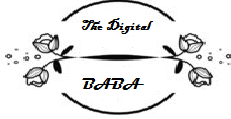
Making their debut almost 15 years ago, hashtags were created by San Diego resident Nate Ride, who wanted to spread awareness regarding wildfires burning in California at the time. Using the first ever hashtag #sandiegofire, Twitter was the first platform to incorporate hashtags into the platform officially in 2009, and other social media platforms soon followed.
Many argue whether hashtags are still relevant today, and the short answer is yes. Initially, the use of hashtags was to hyperlink tags in a way that would put posts into various categories for discovery. Today, social media algorithms rely heavily on hashtags to rank posts and show users who are likely to be interested in said posts.
In our latest blog, we highlight the many benefits of continuing to include hashtags in your social media posts – #LetsGo
1. BRANDING AND VISIBILITY
Branding and visibility are essentially the most powerful reason for you to use hashtags. If you are a new business or simply new to social media, using hashtags can help you expand your audience and increase your brand awareness.
Audiences searching for specific hashtags will see your company’s posts when they would have missed them otherwise, and a quick glance over the hashtags you choose can give them a quick idea of what your services are and what you’re all about. This is a great opportunity to find new followers and potential customers.
2. COMPETITION
It’s important for any business to discover and understand its competitors in the relevant field. What do they offer, how do they advertise and what makes your business the better choice? This may seem daunting, however, hashtags can help take the stress away.
If you want to grow your business, you can simply use the search bar on any social media platform to research competitors’ accounts, top posts and their most-used hashtags.
Discovering this information can help you understand what exactly your audience is searching for and their response to your competitors, which will give you a head start on learning what works and what doesn’t for your own social media posting.
3. AUDIENCE ENGAGEMENT
Depending on which social media platform you are choosing, by using hashtags you can open up conversations with your audience.
For example, on Instagram, hashtags are typically used to describe a photo or video that you are sharing. However, other platforms such as Twitter use hashtags to open up conversations, topics and groups that you might want to engage with and get your own business trending.
Hashtags also help you to collect customer feedback and encourage engagement, as you can easily discover customers’ reactions to events, promotions, and properties by using hashtags.
4. PHOTO CONTENT DESCRIPTION
As we know, imagery and video content are on the rise. For businesses, focusing on visuals is a great way to advertise services or any products you have on offer.
Through your visual content, it is important to reach as many people as possible by using the best hashtags to describe your content. This can help you gain followers, likes and engagement from your audience.
#GETSTARTED
To conclude, if you haven’t started, or if you’ve stopped using hashtags, it is time to get started again! Hashtags remain a great way to facilitate digital interaction, connecting with people all over the world. If you focus on the above points, you’ll be well on your way to building followers and engagement.
Author Bio: Katie McGarr is one of the resident writers for SPRINT DIGITAL Agency Dublin, a firm offering an extensive range of digital marketing and website services to businesses across UK, Ireland, and Continental Europe. She enjoys sharing her insights about blogging, web design, SEO, and other forms of digital marketing.


